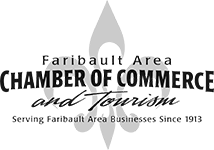Local communities finding successful workforce solutions
By Doug Loon and Nort Johnson
The long-standing challenge of finding workers is entering a new phase at the end of the COVID-19 pandemic. But even as the economy finds new balance in a post-pandemic world, workforce challenges will continue. The Chamber Foundation’s Minnesota: 2030 report outlines that growing the workforce and helping individuals develop the skills they need to succeed in a 21st century economy. We see this as our state’s key economic imperative to grow our economy over the next decade, and beyond.
There is a network that has been building partnerships and a pipeline of workers at the community level for years: The Business Education Network (BEN). In partnership with local chambers, these efforts are customized to the workforce needs of specific regions. Grassroots private-sector efforts are met with the successful collaboration of K-12, higher education and community leaders to build sustainable, nimble pathways to local careers or higher education opportunities.
The Minnesota Chamber Foundation released a five-year report summarizing successes of these programs, available at mnchamber.com.
Faribault leaders from South Central College, Faribault Public Schools and the Chamber of Commerce have developed a program allowing college credits – up to 36 – to be earned during high school. The new program is called H2C and id currently hosting 116 students enrolled on their path to a career in the health sciences field. Construction Trades and Industrial Trades pathways are currently being examined as well. Key components across the Business Education Network include:
CEO in the Classroom
Business owners talk with students, often about what jobs are like at their companies and the classes students should take in order to be ready for certain jobs. This interaction, whether personal or virtual, provides students a real life perspective of career options in a specific industry or company, while at the same, time, providing business leaders, typically many years removed from the classroom, the student perspective on the future of work.
Teacher in the Workplace
High school teachers experience immersive training and exposure to specific industries by working at companies in those industries for a time during the summer. They take this experience back to their classroom in the fall, utilizing what they have learned to develop or revise curriculum to reflect the needs of the economy.
Career Expos, not Career Fairs
Local employers host high school students in a tradeshow-like environment, allowing them to explore jobs and careers that are available in their communities. Thousands of students are exposed to an entire range of jobs in a region. Engagement is much more impactful when students are given the opportunity to “see, touch and do.” In some communities, students go to the business to experience work environments and see employees in action. And while perhaps not as robust an experience, some of these career exploration opportunities have gone virtual, providing greater accessibility.
Career Academies and Pathways
Career academies require a committed school district, paired with an equally committed local business community to drive success. Career academies combine a college-preparatory, career and technical curriculum with a career opportunities, targeted to high demand careers in the region. When students are more engaged in school, they are more likely to succeed academically and graduate. Studies have found that students enrolled in career academies have higher grade point averages, higher test scores and lower dropout rates than non-career academy students in the same schools. As importantly, this partnership with business allows for internships, part time jobs and full time career options after graduation. Or for some, entry into a higher education program that will lead to a future career. Not to mention, in many districts, students have the opportunity to earn higher education credits while in high school.
We encourage you to read the full report, including Faribault’s H2C program. The chamber community is committed to helping employers and employees around the state push through the hardships of the last year and build a long-standing quality of life for all Minnesotans.
